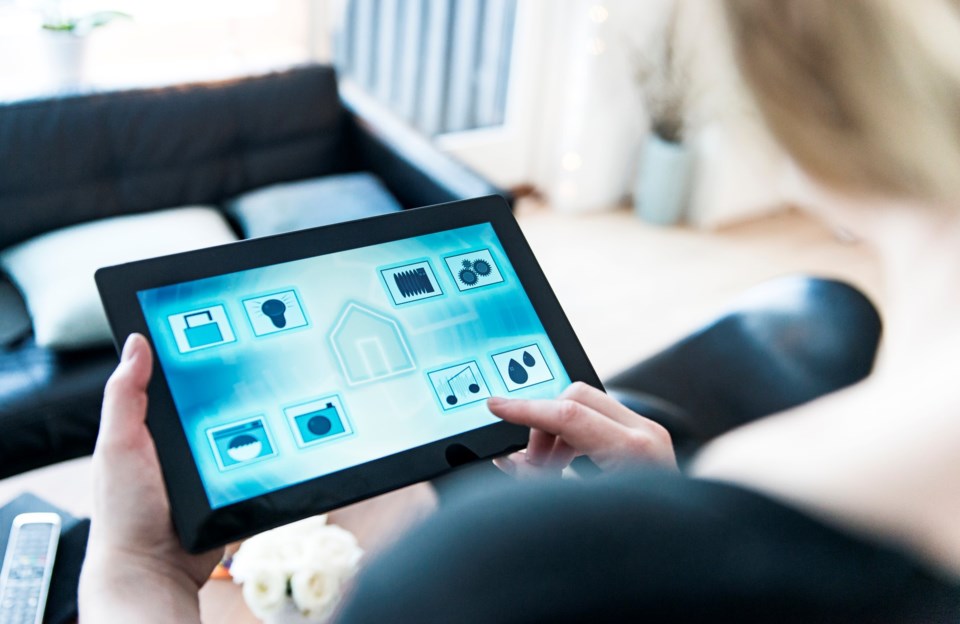Should we embrace new technology in caring for seniors? Can technology replace humans in the care of seniors both at home and in a care facility?
These are some of the questions we may be grappling with in the very near future.
At a thought provoking presentation at a Services to Seniors Coalition meeting organized by Lionsview Seniors’ Planning Society in January, Cherian Itty from Comfort Keepers North and West Vancouver gave a presentation on seniors care and the use of technology.
He pointed out that, “With the number of seniors needing care on the rise, combined with the increasing cost of care services and the ever-worsening shortage of caregivers, we have to look at cost-effective solutions for the future, not as an alternative to replace traditional caregiving, but as an add-on that can make traditional caregiving more efficient.”
Because of the North Shore’s aging population, the difficulties of workers getting to their jobs, lack of affordable housing and good transit, we will need to think smarter about using technology as a complement to humans, Itty said.
In fact, we use technology now, as shown by the proliferation of different types of aids which are technologically based.
For instance, people use Siri – a kind of digital assistant – on their smartphone (and yes more and more seniors are using smartphones) to get information and make phone calls.
Seniors may use an electronic keypad to get into their homes.
House bound seniors are Skyping or texting friends and family, keeping them in touch with the community and reducing their isolation.
Seniors are using wearables such as Fitbits to track their exercise and eating patterns, hearing aids and smart glasses.
Some are using the technology provided by the North Vancouver Library system for seniors and the disabled such as a daisy book reader or ebooks which can be used on a computer.
In the future we may be looking at using devices like Amazon’s Echo speaker with its voice recognition support from “Alexa” to assist seniors in controlling smart home devices like light switches, door locks and thermostats, as well as ordering services online, and, of course, shopping.
Such devices take advantage of online artificial intelligence resources, but also facilitate data collection from users which might help provide service improvements, but at the same time, pose privacy issues.
Itty also presented information about sensors which help monitor physical functions and movement.
One example is a commercial product called GPS SmartSole.
According to the manufacturer the product is “a smartphone hidden and sealed in an insole.
It uses the same GPS and cellular technology as a smartphone. GPS SmartSole automatically checks in with you every 10 minutes, for less than the cost of a few days care in a ‘lock-down’ facility.”
We may also use robots which could assist a senior in setting reminders, carrying things, seeing into dark spaces, calling for help and calling caregivers.
Robots could also be a companion for an isolated senior. Robots are being used in care facilities to assist caregivers in moving seniors; thus alleviating injuries to care givers.
The notion of using technology such as a robot assisting us at home or in a care home may be too futuristic for us, but robotic care for seniors is taken very seriously in many other places.
Robot technology for older people is being developed, tested and introduced in France, Italy, Germany and Japan.
In Itty’s research, he found that there are 5,000 nursing care homes testing robots in Japan.
As I noted in a previous column in December 2016 for the North Shore News, “robotic technological development in the west is slower than it is in Japan but as development increases and products improve, so will acceptance of robots in facilities dedicated to the treatment of the elderly.”
Itty has suggested that there are issues with the use of technology including privacy and the potential for abuse.
He also suggested that technology should not replace a human but that we need to create a balance.
In his research he also found an 120-bed care facility in Australia where staff and residents were using robots, wearables and sensors.
The facility saw a 30 per cent reduction in medical staff, but had better outcomes.
Cherian Itty said that we can’t be left behind in the use of technology so we should be open to it, research its applications, deal with the privacy and abuse issues as technology is developed and talk about it with seniors.
Margaret Coates is the co-ordinator of Lionsview Seniors’ Planning Society. She has lived on the North Shore for 47 years and has worked for and with seniors for 20 of those years. Ideas for future columns are welcome Email: [email protected].



